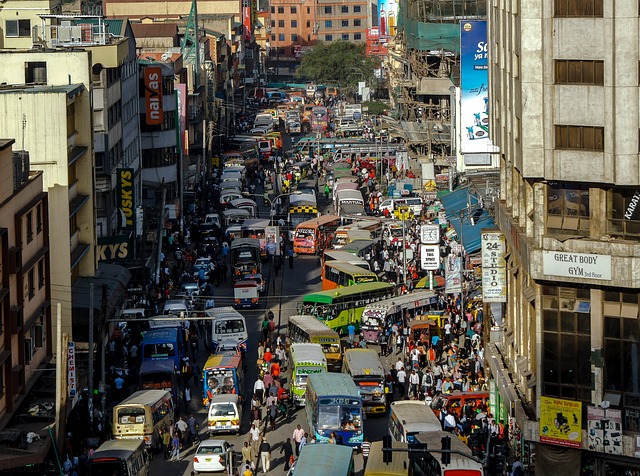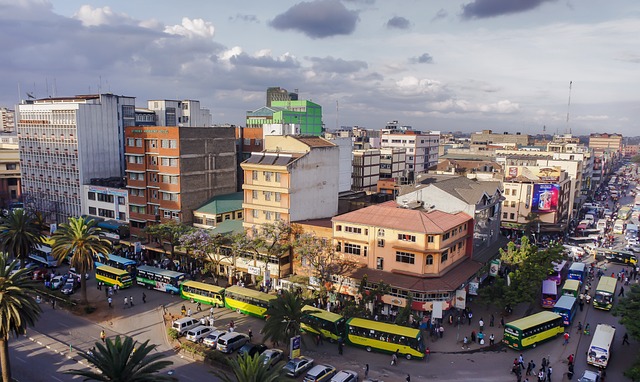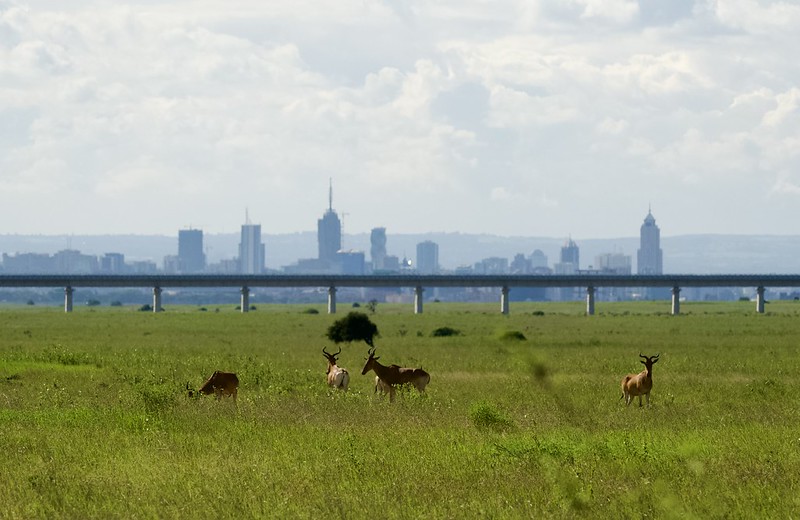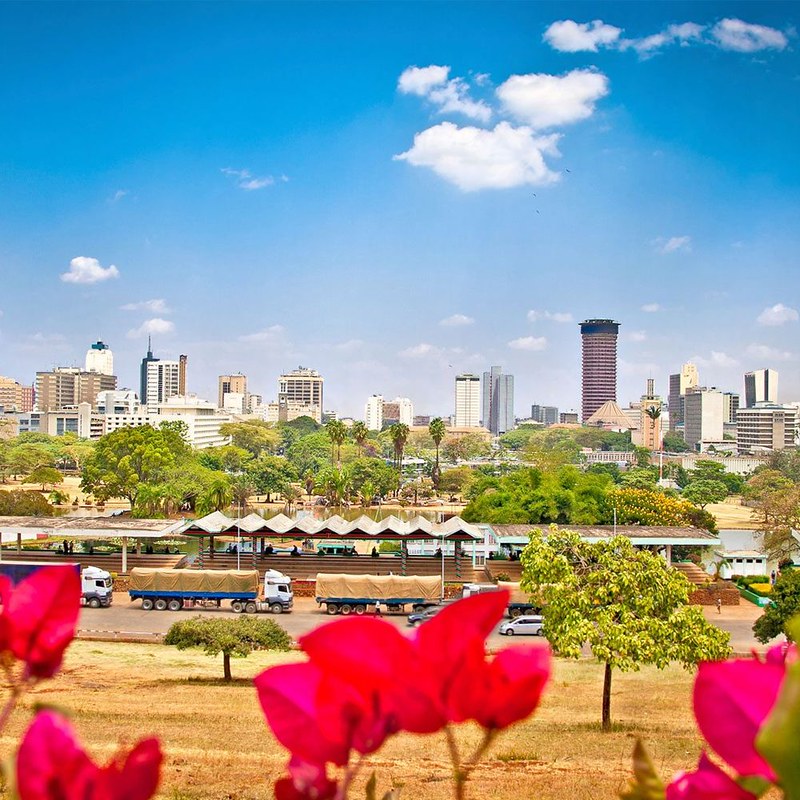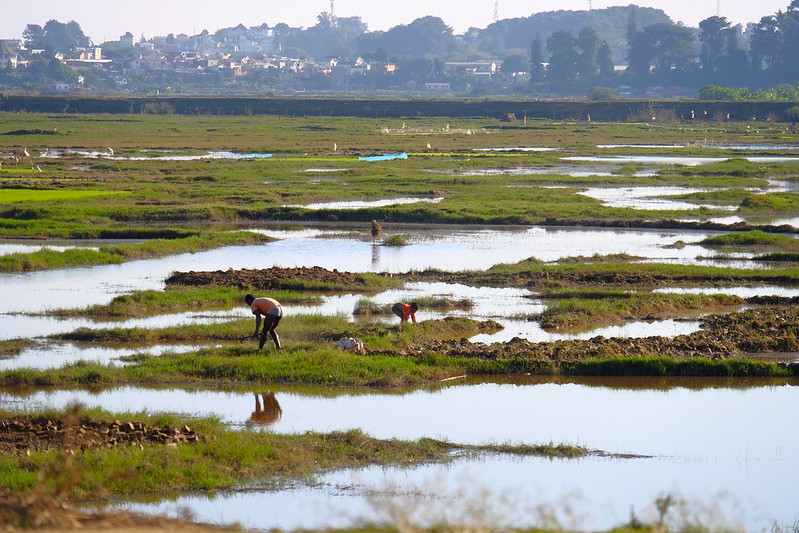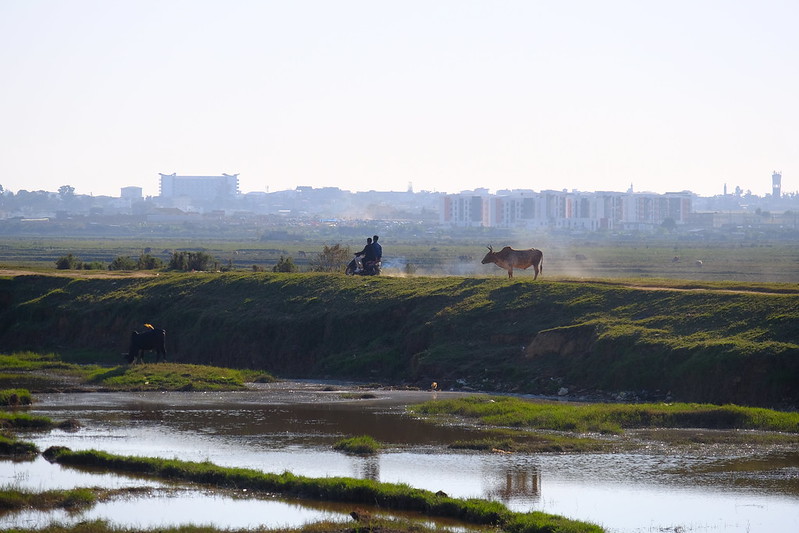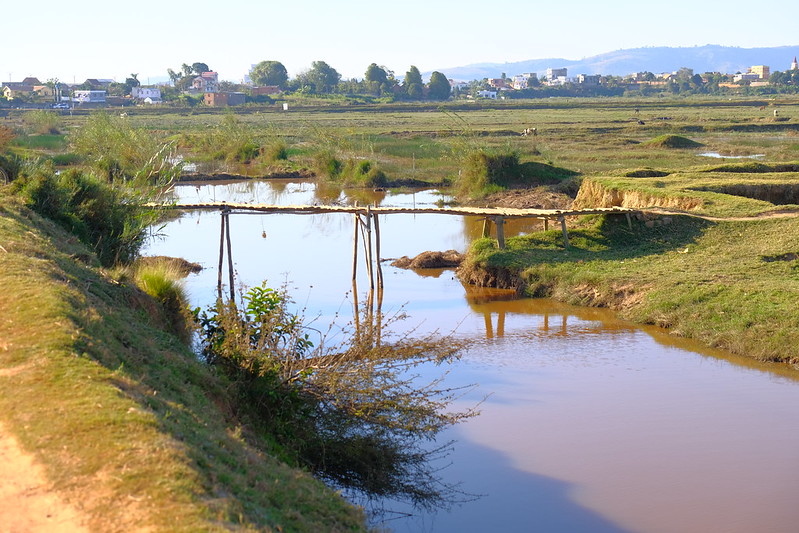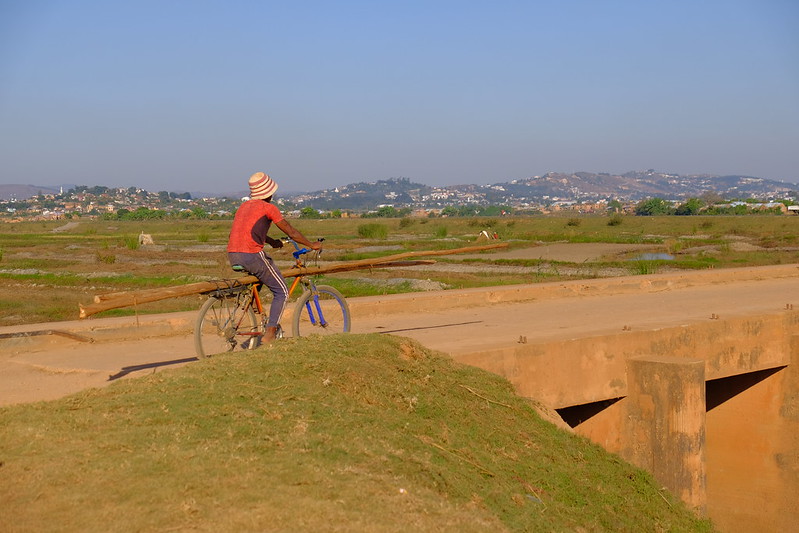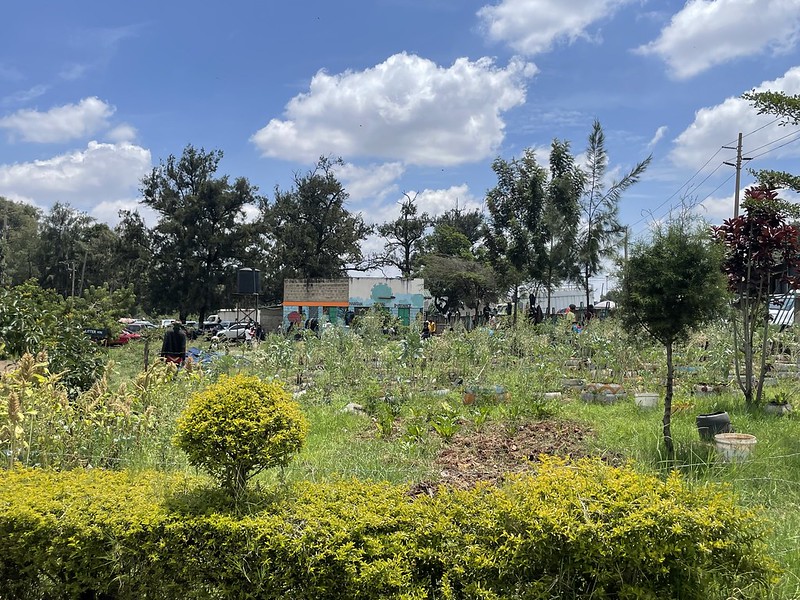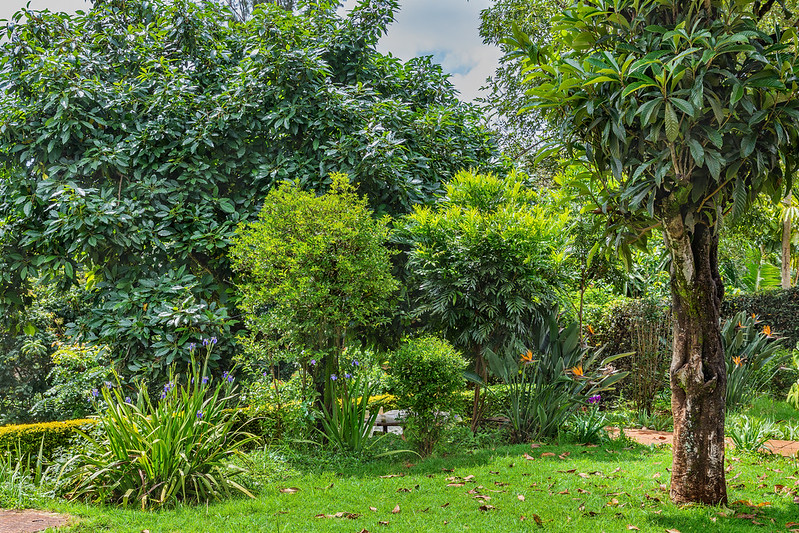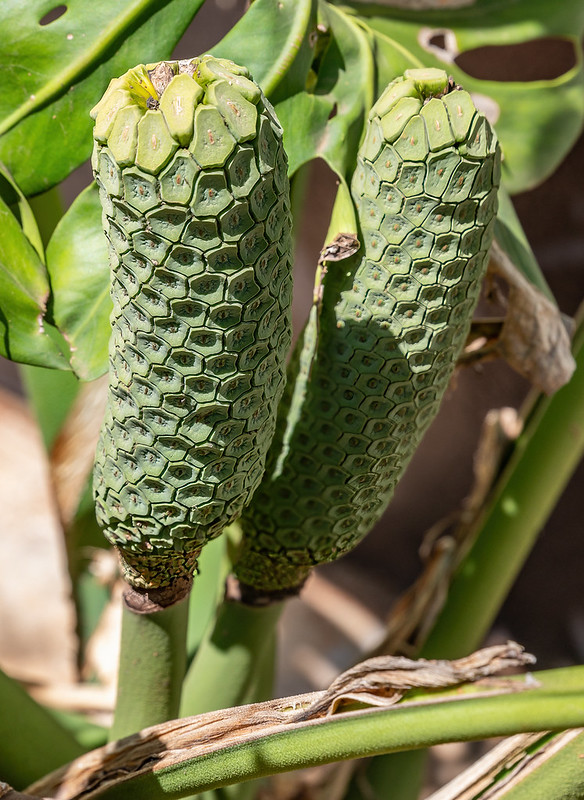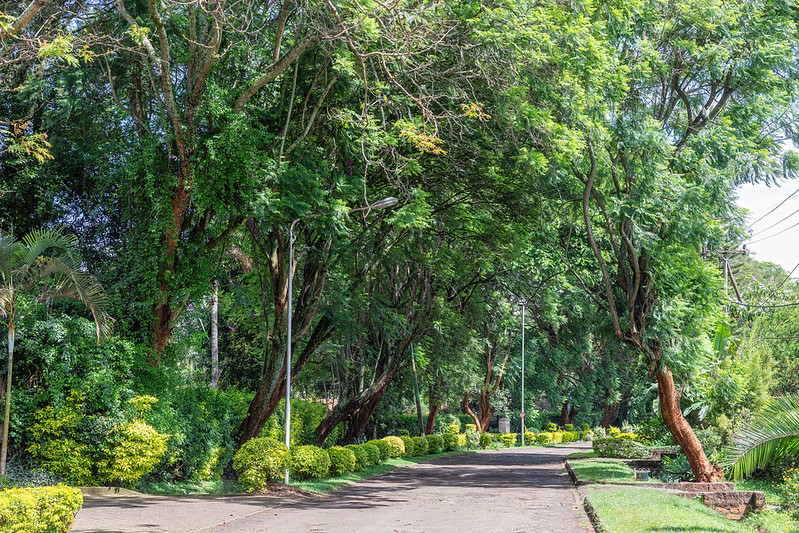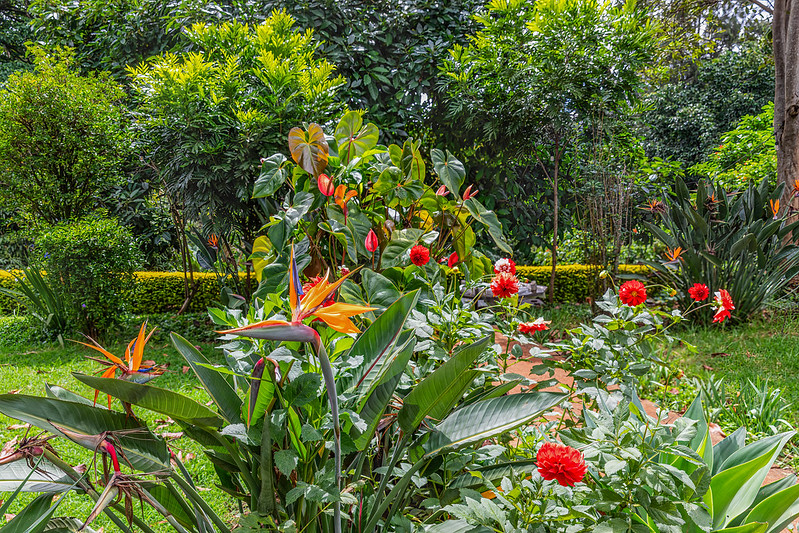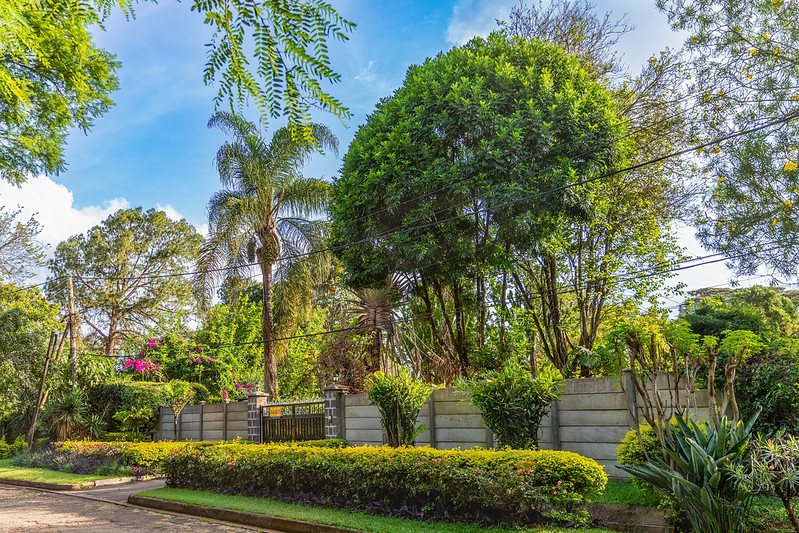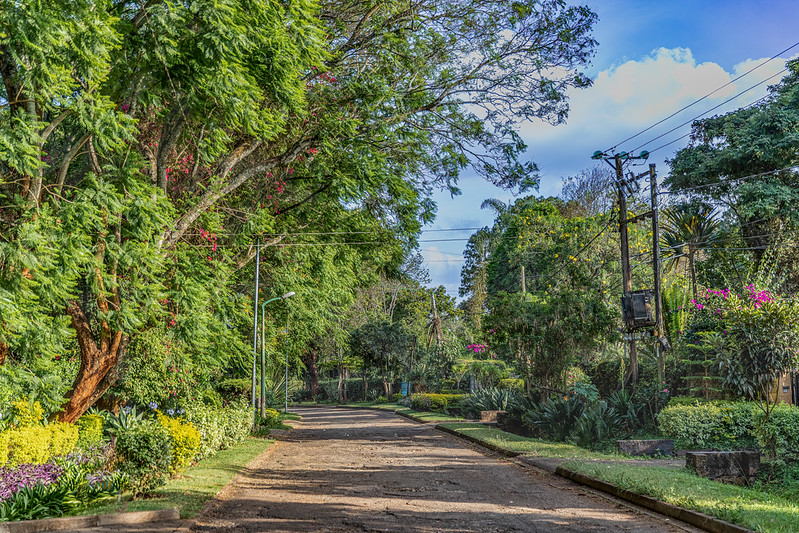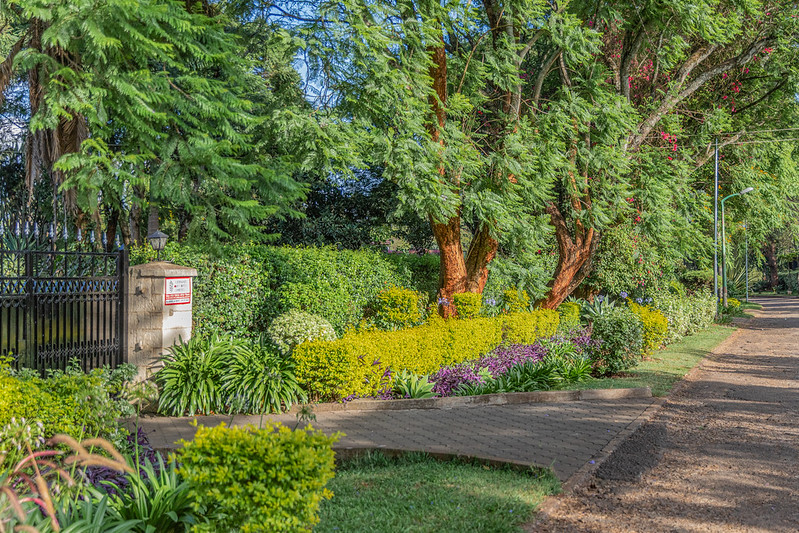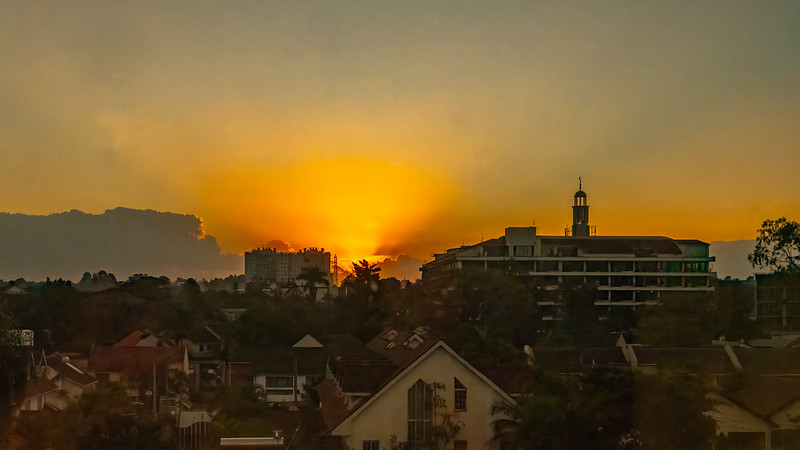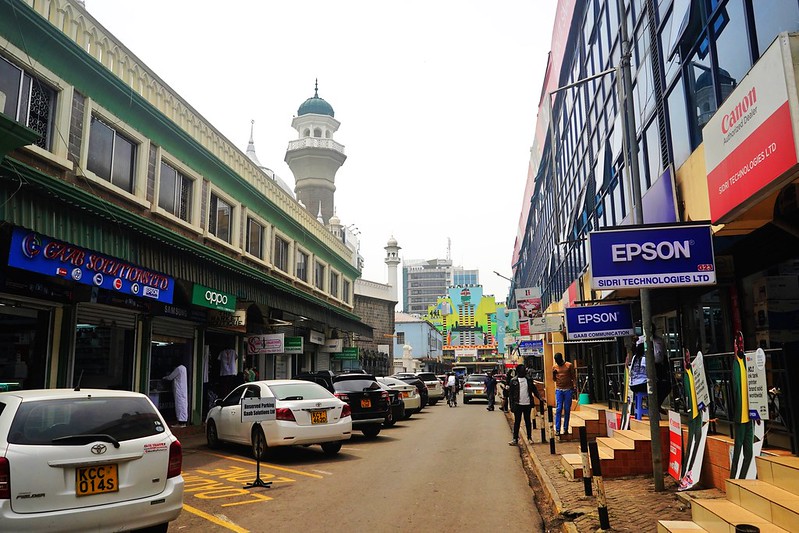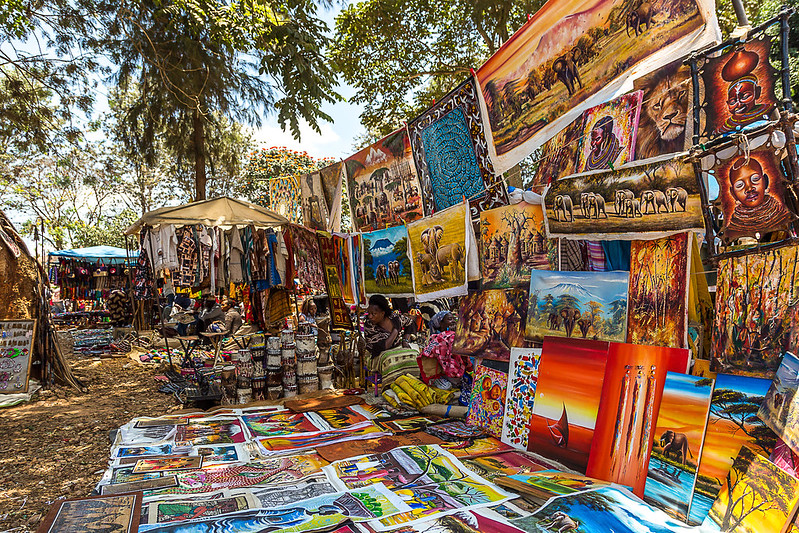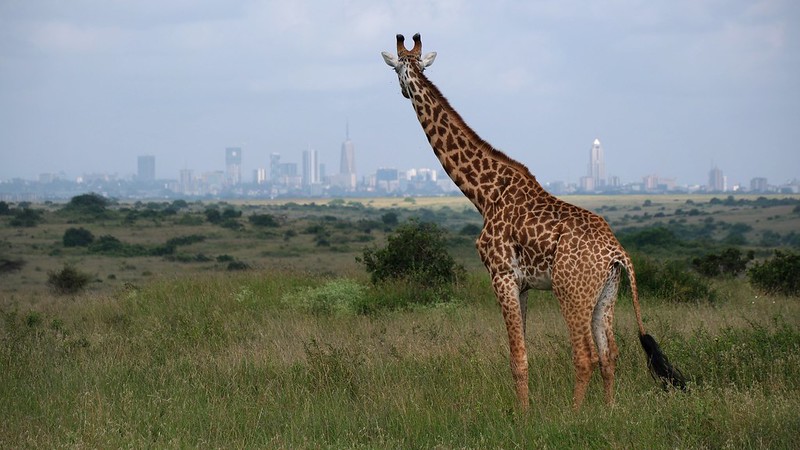Nairobi Travel Guide
Nairobi Travel & Tourism Information
Imagine a city where wild beauty contrasts sharply against an urban setting. This is Nairobi, Kenya's thriving capital, famous for a national park within its city limits. It's a place where African bush sounds mix with urban noise. A dynamic culture and traveler’s paradise, Nairobi is a key East Africa hub, blending history, delicious cuisine, modern art, and wild nature. Tourists looking for a memorable journey that combines African urban life and safari adventures will find Nairobi an essential Kenya destination.
This capital's subtle elegance and lively atmosphere have inspired innovative chefs to revolutionize culinary trends, particularly in the Westlands entertainment area, known for its vibrant food and drink scene. Important attractions like the Karen Blixen Museum and the Sheldrick Wildlife Trust contribute to Nairobi's cultural depth. Businesses like Suave Kenya and Ocean Sole add to Nairobi’s diverse offerings. The Nairobi National Museum is central, showcasing Kenya's rich heritage. Nairobi’s unique attractions make it a premier destination for leisure or business.
Key Takeaways
- Nairobi is a safari capital with a national park within its city limits.
- Rich in Nairobi culture and history, it is home to the Karen Blixen Museum.
- A vibrant city guide for travel enthusiasts featuring local cuisine in Nairobi.
- Nairobi's must-visit attractions include rehabilitation centers and contemporary art galleries.
- A foodie's paradise with experimental restaurants and bustling street food scenes.
- Luxury accommodations like Hemingway's Nairobi cater to travelers' various tastes.
- Emerging as a modern hub with efforts like Book Bunk's restoration of Nairobi's libraries.
The Historical Tapestry of Nairobi
Nairobi is more than just a city; it's a vibrant testament to history. It started as a railway terminus and has evolved into a bustling capital. The history of Nairobi weaves a story rich with milestones that have shaped this Kenyan capital into what it is today.
"Nairobi's story is the epitome of transformation - a city built on the once quiet plains of British East Africa, now a bustling urban center echoing the spirit of Kenyan independence."
A Glimpse into the Past: British East Africa to Independence
Nairobi's roots trace back to the colonial era when it served as a strategic outpost for British East Africa. Founded in 1899, it began as a supply depot for the ambitious Uganda Railway. Its establishment invited a diverse mix of European settlers, Indian traders, and African workers. This blend of cultures has deeply influenced Kenyan culture as we see it today.
Nairobi played a crucial role in Kenya’s march towards independence. It became the stage for freedom fighters and the Mau Mau uprising, signaling a shift from colonial rule towards self-determination. Jomo Kenyatta's leadership was instrumental in steering Kenya into independence, marking a new chapter in Nairobi’s history.
From Struggle to Modernization: Nairobi's Evolution
After gaining independence, Nairobi became the capital of Kenya, and it takes pride in this position. The city saw new roads, buildings, and institutions that were foundational to its modern landscape. This era brought significant changes in governance and education and promoted Kenyan arts and music.
Presently, Nairobi shines as a leading African metropolis in technology and innovation. Despite hurdles, the city's growth showcases the resilience and spirit of its inhabitants. Nairobi, ever-developing, remains at the heart of Kenya, echoing its citizens' resilience and hopes from Kenyatta's era onwards.
The saga of Nairobi is not merely a retrospective journey but a dynamic evolution, reflecting Kenya's enduring essence of independence. Kenyan culture permeates every aspect as Jomo Kenyatta's legacy guides Nairobi in crafting a story of pride, ambition, and indomitable spirit.
Discovering the Heart of East Africa: Nairobi's Prime Location
Nairobi, the capital city of Kenya, shines brightly as East Africa's jewel. It boasts geographical significance and a magnificent position near the Great Rift Valley. Its highland locale delivers stunning views and establishes the city as a key East Africa hub.
Nairobi's location has made it a premier travel destination. It has also been central for regional commerce and communication. Thanks to its elevation, the city's temperate climate enhances its appeal, making it comfortable throughout the year.
Nairobi's cityscape is a vibrant combination of modern skyscrapers and lush parks like the Arboretum. The capital city of Kenya pulsates with life, offering rich narratives at every turn. Stories unfold in its active streets and within the quiet halls of its museums.
Nairobi stands as a beacon of history, culture, and progress. The upcoming MGallery Gigiri, with 105 luxurious rooms, shows the city's development. It joins the elite Accor hotels in Nairobi, underlining Nairobi's status as an East African hub brimming with possibilities.
The urban environs of Nairobi show the diverse socio-economic layers. Some enjoy middle-class comforts while others seek opportunity. Places like Ruaka reflect the urban dream with its developments.
Nairobi's story navigates through economic layers, revealing the city's complexities. Attractions like the Nairobi Safari Walk highlight Kenyan biodiversity. The Bomas of Kenya and the National Museum of Kenya delve into tribal and historical narratives.
Nairobi's spirit comes from its dynamic blend of culture, history, and nature. The Giraffe Centre reflects its commitment to wildlife. Nairobi, therefore, is more than a location—it's a city with a soul, defining East Africa’s core.
Savvy Traveler's Corner: Tips and Tricks for Mastering Nairobi
A journey to Nairobi brings travelers into vibrant street markets and modern vibes. It's a city that captures your focus and rewards those who come prepared. To explore the lush landscapes or the city’s heart, absorb essential Nairobi travel advice. This ensures your journey shines as brightly as the Kenyan sun.
Accommodation Choices: Finding Your Home Away from Home
Nairobi offers a variety of lodging options, reflecting the city's diversity. You can choose from luxurious hotels with breathtaking views to quaint guesthouses filled with local charms. It's crucial to consider what matters most: comfort, budget, or location. The perfect place is there, whether you're embarking on a safari or delving into history-like timeless movie adventures.
Getting Around: Conquering Nairobi's Transport System
Navigating Nairobi's transport reveals the city's rhythm. Colorful matatus and private taxis highlight the local and personal ways to travel. As you dive into your Nairobi journey, remember the city moves with lively bustle. Plan your transit wisely to dodge delays. This approach lets you weave into the fabric of Nairobi's storyline.
The Ins and Outs of Visas, Vaccinations, and Safety in Nairobi
Nairobi is welcoming, yet it abides by strict rules. Smooth travels to Nairobi mean getting visas and vaccinations sorted early. Be mindful of your safety, as awareness in any big city is key. Being informed about Nairobi allows you to immerse in its beauty. It turns you into an explorer, captivated by the land's wonders, much like the guests of Rick’s Café Americain.
FAQ
What are some of the top attractions to visit in Nairobi?
Nairobi, known for its rich history, features highlights like the Karen Blixen Museum. It also showcases wildlife at Nairobi National Park and offers serene spots like Uhuru Park. The Maasai Market presents a vivid cultural experience. Additionally, the Kenyatta International Convention Centre offers breathtaking city views.
How do I prepare for a trip to Nairobi?
Prior to visiting Nairobi, confirm visa requirements and vaccination guidelines. Organize your accommodation ahead of time. Familiarize yourself with local transport and safety tips to ensure a smooth journey.
What is the best time of year to visit Nairobi for a safari?
The optimal safari seasons are from January to February and June to September. During these months, conditions for watching wildlife are outstanding. Situated near the city, Nairobi National Park provides a genuine safari adventure.
What cultural activities can I engage in while in Nairobi?
In Nairobi, immerse yourself in cultural activities. Engage in shopping at the Maasai Market for artisan crafts. Explore the Nairobi National Museum to understand Kenya's rich history. Experience the vibrant local music scene and discover contemporary art across various galleries.
How can I experience local cuisine in Nairobi?
Explore Nairobi's varied food scene by tasting street food like Nyama Choma. Visit local diners to try a variety of Kenyan cuisines. Upscale restaurants offer a mix of international and local tastes.
Are there guided tours available in Nairobi?
Yes, Nairobi features several guided tours. These include wildlife safaris at Nairobi National Park and cultural excursions to the Karen Blixen Museum. Historical tours around the city’s landmarks and museums are also available.
What shopping experiences are available in Nairobi?
Nairobi's shopping experience spans from the Maasai Market’s traditional Kenyan crafts to modern malls. These malls feature a mix of local and international brands.
Can you provide tips for navigating transportation within Nairobi?
Travel around Nairobi using taxis, ride-hailing apps, or the unique matatu minibuses. Understanding fares and routes is beneficial. For longer distances, consider using the Standard Gauge Railway or city buses.
Is it safe to travel to Nairobi?
When in Nairobi, employ standard safety measures. Secure your valuables, avoid solo nocturnal walks in unknown places, and stay updated on local developments.
What should I pack for my trip to Nairobi?
Pack light for warm days and a jacket for the evening chill. Include comfy walking shoes, sun protection, and insect repellent. Bring a camera to capture the breathtaking vistas and wildlife of Nairobi.
How can I ensure a sustainable travel experience in Nairobi?
To travel sustainably in Nairobi, support local enterprises and respect the environment. Opt for eco-friendly tours and use resources like water and plastic judiciously.
Nairobi Photos
Nairobi Beaches
How to get to the Nairobi
Welcome to the vibrant heart of Kenya! Arriving through Jomo Kenyatta International Airport, Nairobi's main entry point, or taking a scenic ride from the coast via the Standard Gauge Railway? Either way, this guide is your key to a seamless trip initiation.
Airport Touchdown: From Jomo Kenyatta International to the City
Jomo Kenyatta International Airport is Nairobi's primary entry point. Recent updates have eased the entry process, eliminating the e-visa requirement. Now, travelers must obtain an Electronic Travel Authorization beforehand. With your eTA and yellow fever card, if needed, you'll smoothly transition through customs into Nairobi's vibrant heart.
On the Road: Bus and Matatu Connections
Nairobi's roads offer a real taste of local life. Matatus, the city's colorful minibusses, zigzag across the metropolis, offering insights into the daily commute. Alternatively, ride-sharing apps like Uber provide a seamless travel option. For the adventurous, navigating using these digital tools gives a taste of local city life.
The Railway Experience: Scenic Travels from Mombasa to Nairobi
Opt for the Standard Gauge Railway from Mombasa for a scenic and comfy journey. Secure your seat early for this sought-after rail service. It's an ideal way to witness Kenya's beautiful landscapes en route to Nairobi. Remember, converting currency at an M-PESA agent ensures smooth transactions in Kenya's predominantly cashless society.
Pro-tip: Nairobi is the perfect blend of nature and urban adventures. It's a city with safe travel methods, cultural depths, and diverse activities. Dive into a world of authentic art, indigenous wildlife, and exquisite foods. Eager for a unique Nairobi experience? Dive deeper with this enlightening travel guide.
Beach Weather
Seasonal Splendors: When to Explore Nairobi
Understanding the Nairobi climate and its rhythms is key to an unforgettable journey. The city welcomes visitors warmly throughout the year. Yet, the best time to visit Nairobi depends on what you prefer regarding weather, animals, and local events. The dry seasons, January through February and June through September, present perfect conditions for wildlife viewing and engaging in various Nairobi outdoor activities. With minimal rain, these months feature clearer skies and easier wildlife observations as animals gather around water sources.
On the other hand, the wet seasons, from March to May and October to December, transform the city with lush, colorful landscapes. During this time, bird enthusiasts and nature lovers witness the renewal of plant life and the bloom of flowers. Additionally, the rainy periods herald a plethora of Nairobi festivals. These are filled with cultural exhibitions, music, and dance, showcasing Kenya’s rich cultural tapestry.
Whether your interests are in park explorations, diving into festival vibes, or seeking adventures, these seasonal distinctions enhance your Nairobi tourism journey. The timing of your visit should align with your adventure preferences. For many, viewing the great migration in the dry seasons is unparalleled. Others find the post-rain beauty of Nairobi captivating like no other experience.
- January-February: Dry season suitable for safaris and outdoor adventures.
- March-May: Wet season perfect for experiencing the lush landscapes and birdwatching.
- June-September: Another dry period ideal for observing the migration and enjoying clear safari paths.
- October-December: The short rains invigorate life and spark cultural events.
Consider the variability of Nairobi's climate when planning your trip. Whether it's adventurous trails, safari excursions, or lively street festivals, each season in Nairobi unveils a unique aspect of its charm. Kenya's heart promises something extraordinary for everyone, regardless of your arrival time.
Sights
Guided Tours: The Ultimate Nairobi Experience
Begin a captivating exploration of Nairobi with Nairobi guided tours. These tours reveal Kenya's essence, blending wildlife excitement with historical depth.
Safari Excursions in Nairobi National Park
Nairobi National Park safaris invite you on adventures across wild terrains populated with iconic African species. You'll get up close with lions, giraffes, and rhinos. Guides share insights on conservation efforts within urban confines. The park symbolizes Nairobi's commitment to protecting nature amidst its growth, illustrating harmony between human advancement and environmental care.
Walking the Path of History: Nairobi's Museums and Monuments
Discover Nairobi's history through its famous museums and monuments. Expert guides narrate the tales of the National Museum and significant monuments. These landmarks highlight critical chapters of Kenya's history and are vital to understanding Nairobi's evolution and dynamic present.
Nairobi: A Melting Pot for Travelers of All Types
The heart of East Africa, Nairobi, beckons with its blend of culture and nature. It draws diverse visitors, from safari enthusiasts to adventure seekers. From 2019's population of 4,397,073, it's expected to hit 4,828,000 by 2024. This showcases Nairobi's vibrant diversity and energy.
Its economy might shine with a 30 billion USD GDP in 2023. Even more impressive is its 90 billion USD GDP PPP. This reflects its status as both a safari hotspot and an economic hub. The Nairobi Securities Exchange facilitates up to 10 million trades a day. It is a testament to East Africa travel Investments and worldwide business ventures.
Nairobi’s story weaves through its rich cultural tourism. From a small 1921 settlement of 24,000, it became part of UNESCO's Global Network by 2010. It tells of world influences and local resilience. An example is the 1950 nine-day general strike led by the East African Trades Union Congress.
Nairobi’s tale is also green and wild. The Giraffe Centre started in 1983 and focuses on saving the endangered Rothschild's giraffe. Plus, the expansion of Jomo Kenyatta International Airport in 1972, at over US$29 million, highlights Nairobi’s role. It serves adventure travel in Nairobi and global commerce and development.
The city has overcome dark times, like the 1998 US Embassy bomb attack. Yet, it thrives, showing ceaseless growth and resilience. Today, Nairobi shines as a center for Nairobi attractions, economic vitality, and community strength. It ranks as a top destination among things to do in Nairobi.
Nairobi's Cultural Encore: A City Alive with Tradition and Modernity
Step into Nairobi, where tradition and modernity unite in harmony. The city holds onto its deep-rooted traditions while embracing a modern identity. Celebrating its culture, Nairobi tells a story of evolution that remembers its origins amidst modern changes.
Markets, Music, and Galleries: Experiencing Local Life
In Nairobi, culture comes alive through its vibrant local life. At the Maasai Market in Nairobi, you get more than crafts. It's a dive into a bazaar full of traditional artifacts, textiles, and Kenyan warmth. The city's music scene merges traditional beats with modern Afro-pop, urging everyone to dance.
Nairobi's art galleries showcase the city's soul through visual art. These galleries tell Kenya's story from various perspectives. They mark Nairobi's transition from tradition to modernity, honoring its history with every artistic expression.
Maasai Market and Beyond: Shopping for Authentic Crafts
The Maasai Market is a hub for Nairobi's rich artisan culture. Here, you can find unique Kenyan crafts. These include jewelry, vibrant garments, and household items. They reflect the enduring Maasai spirit and wider Kenyan heritage.
| Cultural Attraction | Description | Experience Offered |
|---|---|---|
| Maasai Market | Outdoor marketplace | Shopping for traditional Maasai crafts and clothing |
| Nairobi Music Venues | Concert halls and clubs | Live performances of local and international music genres |
| Art Galleries | Exhibition spaces | Exploration of contemporary and historical African art |
Visiting these vibrant centers fosters an appreciation for Nairobi's tangible and intangible heritage. Handcrafted goods and their cultural significance illuminate the city's cultural evolution. Each basket and sculpture tells a story of continuity and growth in Nairobi’s cultural scene.
In Nairobi, history accompanies the present. This cultural narrative invites visitors to explore its vibrant heritage and immerse themselves in the tapestry of this African metropolis.
Urban Sanctuaries: Nairobi's Natural Getaways
Nairobi National Park provides a tranquil escape in the heart of a bustling city. It blends urban development with the beauty of nature over 117 square kilometers. The park's varying elevation supports a wide range of species. It stands as a beacon of natural beauty amidst Nairobi’s urban sprawl.
From its inception in 1910, the park has seen Nairobi grow from 14,000 to 1.5 million by 1997. In an iconic act of conservation, President Moi destroyed twelve tons of ivory in 1989. This marked a firm stance on wildlife protection in the midst of urban expansion.
Nairobi National Park is a sanctuary within the city, housing up to 500 bird species. Thanks to the David Sheldrick Wildlife Trust, it is crucial for the survival of orphaned elephants and rhinos. The park is celebrated as a leading rhinoceros sanctuary in Kenya.
Nairobi National Park, often referred to as the Rhinoceros Sanctuary, is an embodiment of the balance between human activity and the preservation of natural habitats.
The park's location near factories poses a risk of pollution, highlighting the ongoing battle for environmental care. This situation reveals the delicate balance between industrial development and preserving green spaces in Nairobi.
Historically, the Maasai community relocated due to the park's establishment. This move affected both the landscape and the cultural dynamics of the area. It illustrates the significant yet complex relationship between human settlements and natural reserves.
The Giraffe Centre is yet another pillar of Nairobi’s commitment to wildlife. It encourages hands-on learning and appreciation for nature. Together with the David Sheldrick Wildlife Trust, it underscores the city's role in global conservation efforts.
Time Travel in Nairobi: Visiting Historic Landmarks and Museums
Discover Nairobi's history at its preserved landmarks and museums. Each site offers a distinct view into the city's past, from a colonial outpost to the bustling metropolis it is now. The Karen Blixen Museum and Nairobi Railway Museum provide a captivating journey through time to uncover Nairobi's colonial history and path to independence.
Museums That Narrate a Nation: From the Karen Blixen Museum to the Railway Museum
The Karen Blixen Museum, located in the famous Danish author's home, preserves the atmosphere of the early 20th century and brings 'Out of Africa' to life. The Nairobi Railway Museum emphasizes the railway's crucial role in Kenya’s development, offering insights into the nation's advancement in the post-colonial era.
The Karen Blixen and Railway Museums are essential historic sites in Nairobi. The former highlights Nairobi's literary history, while the latter shows how technology and commerce fueled change.
These institutions shed light on Nairobi’s significant historical phases. They capture the city’s cultural and economic stories and critical events such as the Mau Mau Rebellion and Kenya's fight for sovereignty.
"Visiting Nairobi museums is a testament to the city's resilient spirit and a tribute to its national identity."
Whether interested in history, railways, or the past, these Nairobi historic landmarks are essential for understanding the city’s rich heritage.
Food
A Culinary Journey Through Nairobi's Foodscapes
An adventure into Nairobi's culinary scene reveals a vast array of flavors. The city enchants food enthusiasts with various dishes, from spicy street foods to refined gourmet offerings. It celebrates Nairobi's cultural diversity, expressed through its love for food. This guide introduces you to Nairobi's most captivating culinary experiences.
Street Food Sensations and Gourmet Delights
Nairobi's streets invigorate food lovers, showcasing the essence of Kenyan cuisine through its bustling local food scene. Stalls and vendors offer an authentic taste of the city. Here, Nyama Choma, a beloved barbecue dish, stands out as a cultural staple. Those seeking upscale dining will find Nairobi's gourmet scene equally rewarding. It features dishes combining local and international tastes prepared by world-class chefs.
When mapping out your Nairobi food tour, remember the city's food system supports gender equity. Women entrepreneurs are crucial, serving inspiring dishes that form the backbone of Nairobi's eateries.
Nyama Choma and Local Eateries: A Taste of Kenyan Cuisine
Nairobi's eateries offer a genuine Kenyan dining experience featuring both traditional flavors and heartfelt hospitality. Nyama Choma epitomizes the joy of cooking with fire, a practice deeply embedded in the city's social fabric. These establishments, from small shacks to upscale restaurants, are more than dining spots. They are economic lifelines, often led by women challenging societal norms.
These women's efforts enrich Nairobi's food culture significantly. Despite challenges like inequality and discrimination, their perseverance strengthens the community. Their determination and achievements deserve recognition and support.
| Nairobi's Food System Influence | Challenges | Strategies for Improvement |
|---|---|---|
| Primary food source for low-income residents | Discrimination towards female food vendors | Increase female representation in food regulation |
| Ensure food security for vulnerable populations | Rising rates of diet-related diseases | Implement health and nutrition-focused programs |
Nairobi's culinary landscape offers a wealth of flavors as diverse as the city itself. From street food gems to gourmet dining, each meal sheds light on Nairobi's dynamic culture and the resilient people nourishing its inhabitants.
Shopping
The Shopper's Journey: From Maasai Markets to Modern Malls
The Nairobi shopping scene offers a vivid exploration of retail. From lively street markets to sleek modern malls, there’s something for every shopper. The city's retail spaces dazzle the senses and cater to varied shopping preferences.
The Maasai Market stands out in the heart of Nairobi. Here, Kenya's vibrant culture shines through each handcrafted item. Shoppers find unique handmade goods like belts and bags. Maasai women meticulously crafted these pieces through traditional hand-beading, often taking days for just one item.
Cities host numerous markets, but the real distinction lies in the authenticity and intention behind each product. Nairobi’s markets offer a shopping experience steeped in tradition and craftsmanship, far from the usual tourist fare.
Bargaining is an integral part of shopping here. The unwritten rules of negotiation mean prices can drop by up to 30 percent. This tradition secures a good deal and enriches the shopping experience in Nairobi with local interaction.
Airports have become unexpected spots for finding unique items. Airport markets often feature distinctive goods at competitive prices. Here, travelers might find the perfect souvenir to capture their Nairobi moments, sometimes right before flying home.
- The Maasai Market offers traditional beadwork and diverse handcrafts.
- Modern malls in Nairobi blend global and local fashion in a contemporary atmosphere.
- Nairobi street markets provide an authentic, local shopping experience with many products.
For those looking to master the art of market shopping, professional tips are crucial. Nairobi's shopping landscape caters to all, merging the charm of the Maasai Market with the modernity of modern malls in Nairobi. Dive into Nairobi’s stores to start a remarkable shopper's journey.
